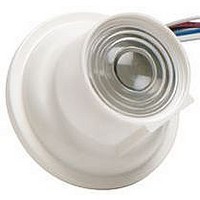DHIP HUBBELL WIRING DEVICES, DHIP Datasheet - Page 10

DHIP
Manufacturer Part Number
DHIP
Description
Daylight Harvesting Indoor Photocell
Manufacturer
HUBBELL WIRING DEVICES
Datasheet
1.HMHBSA.pdf
(28 pages)
Specifications of DHIP
Peak Reflow Compatible (260 C)
No
Leaded Process Compatible
No
For Use With
H-MOSS Motion Sensing Switches
Lead Free Status / RoHS Status
Contains lead / RoHS non-compliant
H-MOSS
Hubbell Motion Sensing Switches
for an Energy Conscious World
Energy Saving
Locations:
Store Rooms
Restrooms
Break Rooms
Labs
Exam Rooms
Administration Offices
Circulation
Pro Tip:
Adaptive Technology
will automatically adjust
for changes in shifts,
usage, and seasons
eliminating the need for
manual adjustments
and improving system
performance.
Success Factors:
• Prevent lights from
• Minimize privacy
• Healthcare facilities
10
* Energy Information Administration:
** Based on 40% lighting savings
coming on at night in
patient rooms by setting
AP, AD, and AU series
products to manual-on
mode.
curtains and carts
from preventing sensor
activation by utilizing
Dual Technology or
Ultrasonic sensors.
have many special
requirements and unique
environments. Contact
your local Hubbell
sensor professional
for layout and product
selection assistance.
2003 Commercial Buildings
Energy Consumption Survey
from sensors.
Actual results may vary.
®
Typical Healthcare Electricity Usage and Savings
Healthcare Solutions
Payback
Faster
Office Equipment
Based on average occupancy and installation complexity.
20%
Other
Lighting Uses 42% of Total Electricity
Application ROI Index
5%
Lighting
42%
Climate Control
33%
Turning lights off should be the least
of the worries.
Hospitals are a 24/7 operation where decisions
and actions regarding the wellness of patients
are critical. Consequently, lights are often
left on when not needed. There are several
areas throughout hospitals that can realize
substantial efficiency improvements with
little investment like administration offices,
storerooms, closets and break rooms. Private
practices, medical labs and outpatient
care facilities have lower occupancy rates
than hospitals and can further benefit from
occupancy sensors.
Promote healthier environments.
Light switches are one of the most commonly
touched surfaces, spreading diseases and
bacteria. Installing occupancy sensors where
appropriate eliminates the need to touch a
switch, which can help reduce the spread of
pathogens. At the same time, healthcare staff
benefit from a simple, user-friendly method of
controlling the lights.
Savings
17%
Average electricity
bill savings**
*













